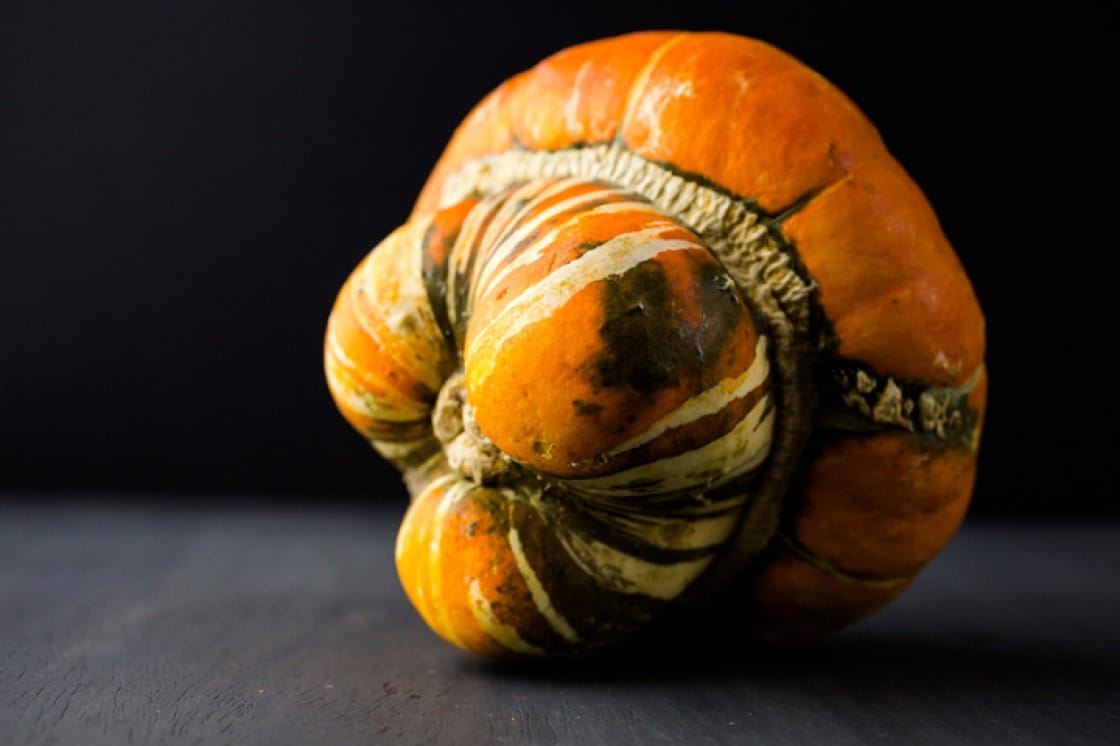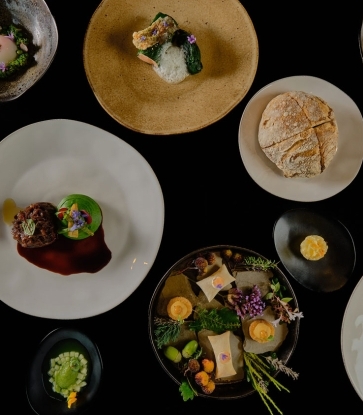Indeed, pumpkins—like tomatoes—are fruits. In fact, all pumpkins belong to the squash family; any tough-skinned squash could technically be called a pumpkin.
And with pumpkin season upon us, we thought it timely to put together a brief guide to increase your knowledge. A general rule of thumb is the bigger they are, the less flavorful. The smaller ones are easier to prep, cook and taste profoundly better.
Don't worry if the exterior of the pumpkin looks a little dull—as long as you don't see any big bruises or soft spots, they're good to go. Pumpkins have a long shelf life and can keep for months at a cool room temperature.

Kabocha Squash
Naturally sweeter than butternut squash, the bright yellow flesh of the kabocha is denser than traditional pumpkins—a cross between a sweet potato and a pumpkin, if you will. When cooked, it is deliciously rich and creamy, which means it lends well to just about anything: pies, soups, stews or even cookies. We like roasting it with a knob of butter and consume it as is.

Butternut Squash
Though it's drier than the kabocha, it’s no less sweet. And like the kabocha squash, the butternut is known for its versatility. Its flesh is meaty, smooth and absent from thick fibrous strands, which means it sautés, roasts and pureés exceptionally well.
Sugar Pumpkin
These smaller, bright orange pumpkins are commonly known as sugar pumpkins due to how sweet they are; they can be baked, roasted, pureéd or stewed just like any other winter squash. Its small size makes it easier to handle in the kitchen and its sweet, nutty flesh lends well to both savory and sweet recipes.

Spaghetti Squash
No spiralizers or newfangled kitchen gadgets required when it comes to this type of squash. All you need is an oven and approximately a half an hour of your time. Simply cut the squash in half, remove the seeds and pulp, and cook it face-down on a baking dish. Once it's tender, grab a fork and gently drag it through the squash length-wise. Strands of spaghetti squash will follow.

Turban Squash
It comes in lovely, irregular shapes and a spectrum of mottled shades of green, orange and yellow. The turban squash is an heirloom predating 1820 that has a starchy texture that works extraordinarily well in soups and stews. Its meaty flesh and subtle flavors also means that it takes to seasoning and spice beautifully.



















